The First Law series by British author Joe Abercrombie has taken the fantasy world by storm. Known for its complex characters, gritty realism, and intricate plots, this series offers a dark twist on traditional fantasy narratives. If you’re new to the world of Logen Ninefingers, Sand dan Glokta, and Jezal dan Luthar, you may find yourself wondering where to start.
With a mix of trilogies, stand-alone novels, and short story collections, the reading order isn’t as straightforward as one might think. That’s why we’ve put together this guide to help you navigate through Abercrombie’s grimdark universe.
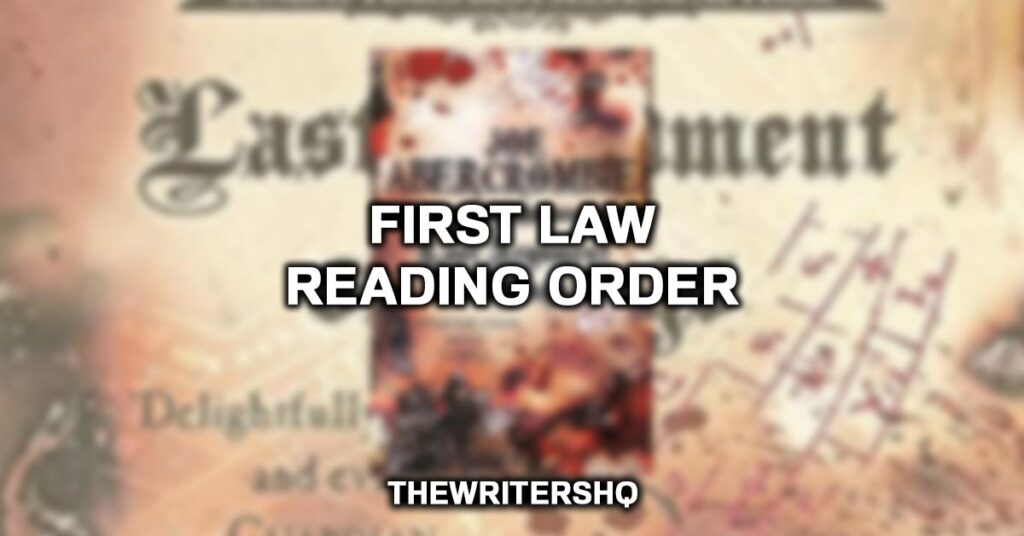
Part 2: First Law Reading Order (Quick List)
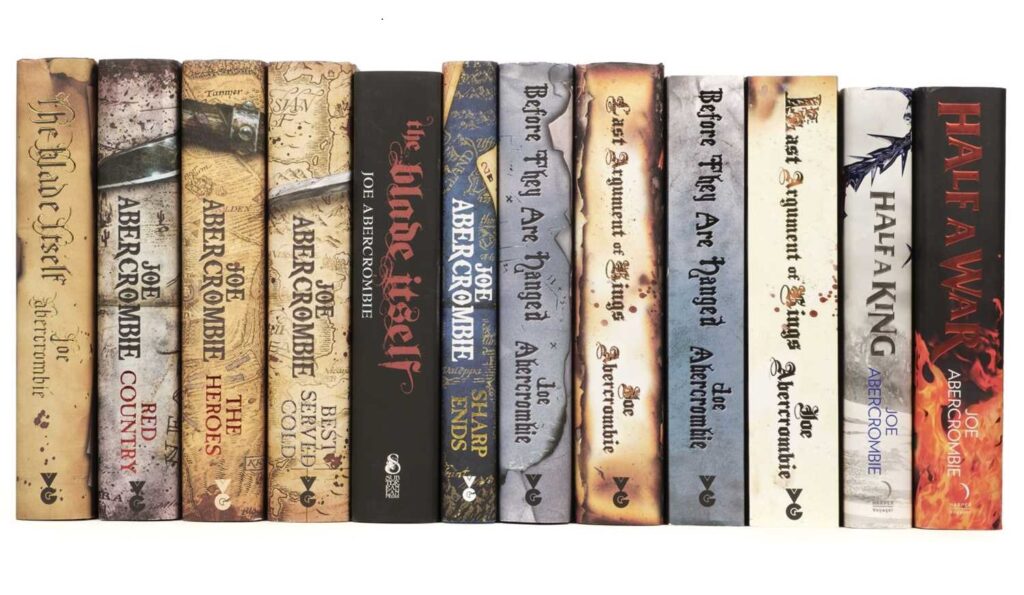
- The Blade Itself (First Law Trilogy, Book 1)
- Before They Are Hanged (First Law Trilogy, Book 2)
- Last Argument of Kings (First Law Trilogy, Book 3)
- Stand-Alone Novels (Best Served Cold Universe)
- Best Served Cold
- The Heroes
- Red Country
- Short Story Collections 7. Sharp Ends
- The Age of Madness Trilogy 8. A Little Hatred
- The Trouble with Peace
- The Wisdom of Crowds
This list provides a comprehensive way to tackle the series, giving you the full experience of Abercrombie’s world. Happy reading!
In What Order Should I Read The First Law Series?
For an optimal reading experience that maintains both chronological events and reveals, the recommended reading order for the First Law series is as follows:
- The Blade Itself (First Law Trilogy, Book 1) – The book that sets the stage for everything to come.
- Before They Are Hanged (First Law Trilogy, Book 2) – The sequel that delves deeper into the main characters and the overarching plot.
- Last Argument of Kings (First Law Trilogy, Book 3) – The conclusion to the original trilogy.
Stand-Alone Novels (Best Served Cold Universe)
- Best Served Cold – A tale of revenge set in the same world, featuring some familiar faces.
- The Heroes – Focused on a single, pivotal battle.
- Red Country – A Western-inspired installment with a fresh setting and returning characters.
Short Story Collections
- Sharp Ends – A collection of short stories set in the First Law world; can technically be read at any time but may contain spoilers for earlier books.
The Age of Madness Trilogy
- A Little Hatred – The start of a new trilogy, several years after the events of the previous books.
- The Trouble with Peace – The stakes get even higher in this sequel.
- The Wisdom of Crowds – The concluding volume
Is the First Law Series Complete?
As of my last knowledge update in September 2021, the First Law series was not complete. Joe Abercrombie had finished the Age of Madness Trilogy with “The Wisdom of Crowds,” but he has expressed interest in continuing to write within this universe.
Expert Tip: As a dynamic and ever-expanding world, it’s worth keeping an eye on Abercrombie’s announcements for any new additions to the series.
Given the complex and layered storytelling, it’s possible we may see more books, short stories, or even spin-offs in the future. So while the existing trilogies and stand-alone novels form complete narratives within themselves, the overall series could very well expand.
Summary of the books
The Blade Itself (Book 1)
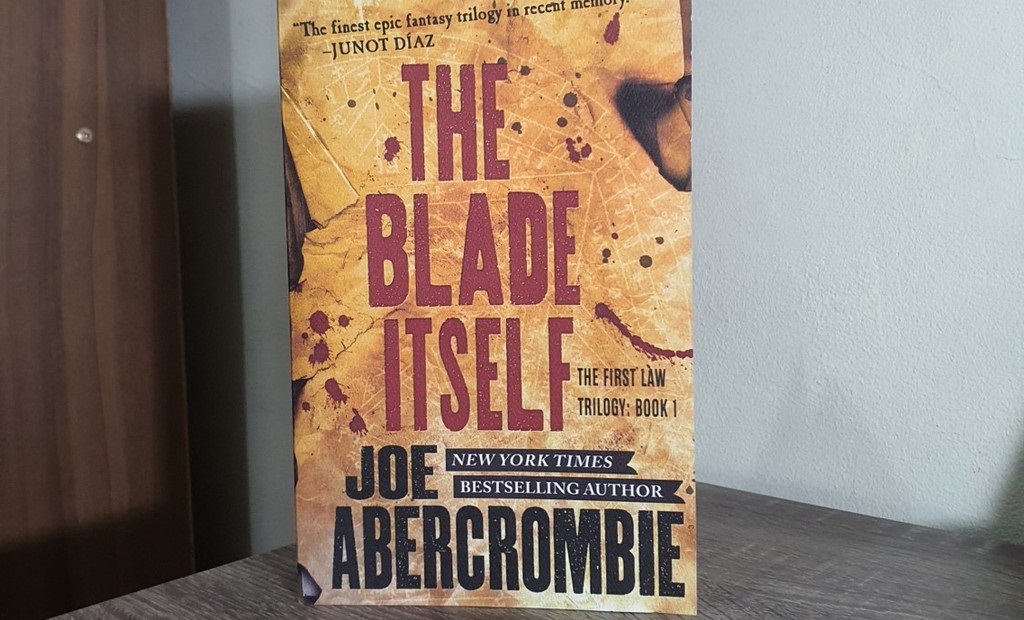
In “The Blade Itself,” we’re introduced to the key players in Abercrombie’s grimdark world. Logen Ninefingers, a notorious Northman, finds himself reluctantly teaming up with Bayaz, the First of the Magi, on a mysterious quest.
Captain Jezal dan Luthar is a self-obsessed nobleman who dreams of glory in an upcoming fencing contest, while Inquisitor Sand dan Glokta, a torture specialist, is tasked with rooting out traitors and conspiracies against the Union.
As these characters’ paths begin to intersect, it becomes clear that larger forces are at play, setting the stage for a significant conflict.
Before They Are Hanged (Book 2)
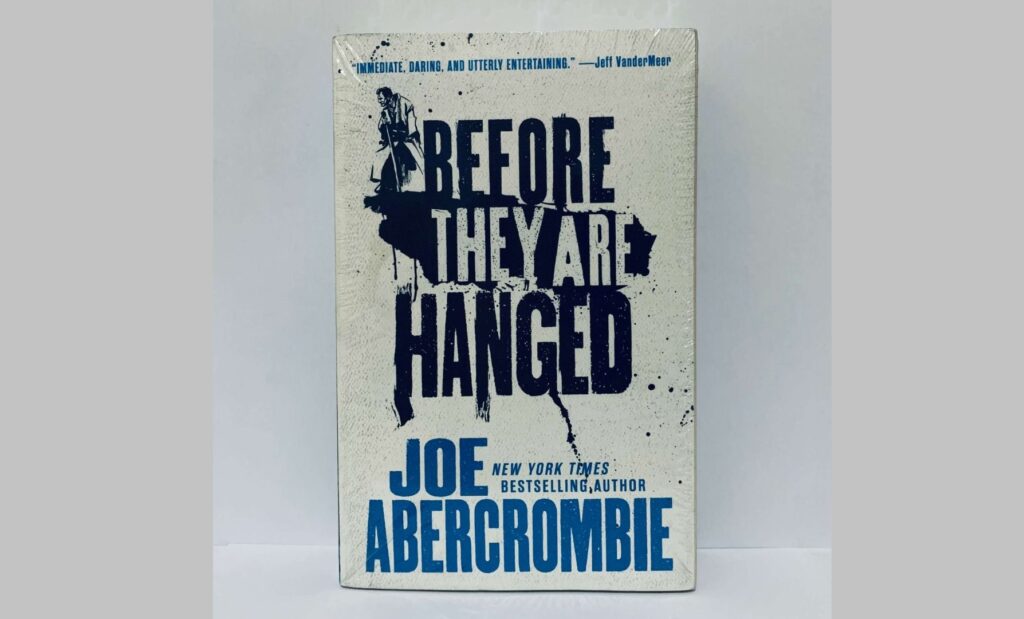
The second installment sees our protagonists scattered on different missions that are seemingly unrelated but are intrinsically tied to the larger plot. Logen, Bayaz, and their companions set off on a perilous quest to the edge of the world in search of a powerful artifact.
Meanwhile, Jezal dan Luthar and Colonel West find themselves embroiled in a war against the Northmen. Inquisitor Glokta is sent to the city of Dagoska to defend it from the Gurkish Empire and to investigate the disappearance of his predecessor. Each group faces unique challenges, moral dilemmas, and a string of unexpected twists.
Last Argument of Kings (Book 3)
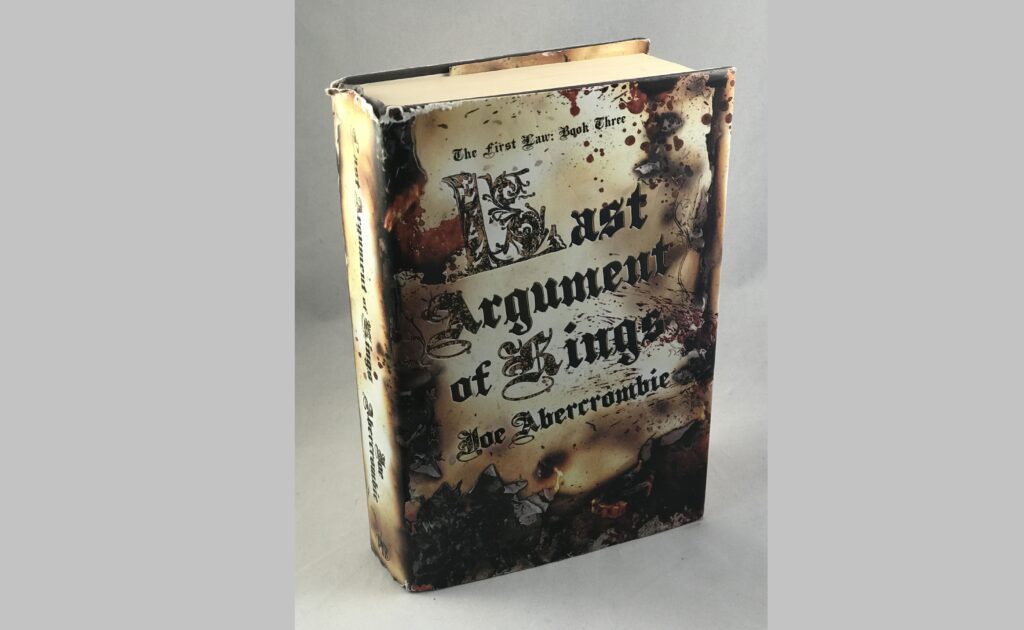
The concluding volume of the trilogy, “Last Argument of Kings,” brings all the threads together in a tumultuous finale. The Union faced war on multiple fronts, against both the Gurkish Empire and the Northmen led by King Bethod. Bayaz’s quest culminates in a struggle for an ancient power that could tip the scales in the Union’s favor.
Glokta’s investigations unravel deep-seated corruption and treachery within the Union itself. Jezal dan Luthar finds himself unwillingly thrust into a position of immense responsibility. Personal ambitions, betrayals, and secrets collide as the fate of the Union hangs in the balance.
Expert Tip: Each of these books adds layers of complexity to the characters, who find themselves caught in a web of politics, war, and dark magic. The series is renowned for subverting traditional fantasy tropes and offering a more nuanced, morally gray world.
Best Served Cold (Stand-Alone Novel 1)
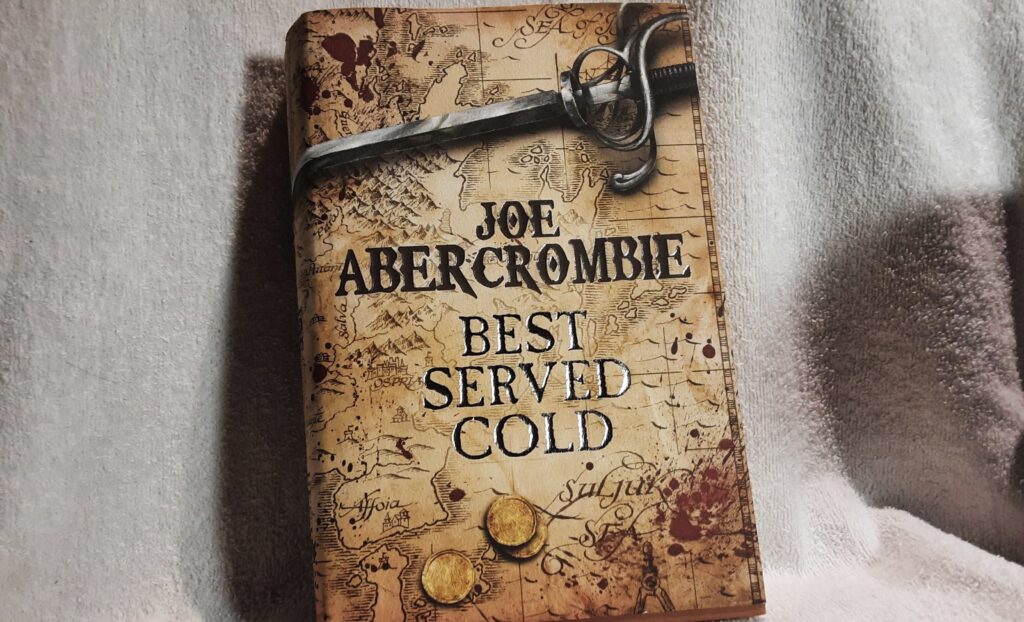
Set several years after the events of the original trilogy, “Best Served Cold” is a story of vengeance. Monza Murcatto, a skilled mercenary, is betrayed by her employer, Grand Duke Orso, and left for dead.
She survives and embarks on a quest for revenge, recruiting a motley crew of characters to assist her, including Caul Shivers, a Northman seeking to become a better man, and Nicomo Cosca, a drunkard and former mercenary general.
As Monza’s brutal revenge spree unfolds, it becomes clear that her actions have wider political implications that may change the balance of power in the Union and beyond.
The Heroes (Stand-Alone Novel 2)
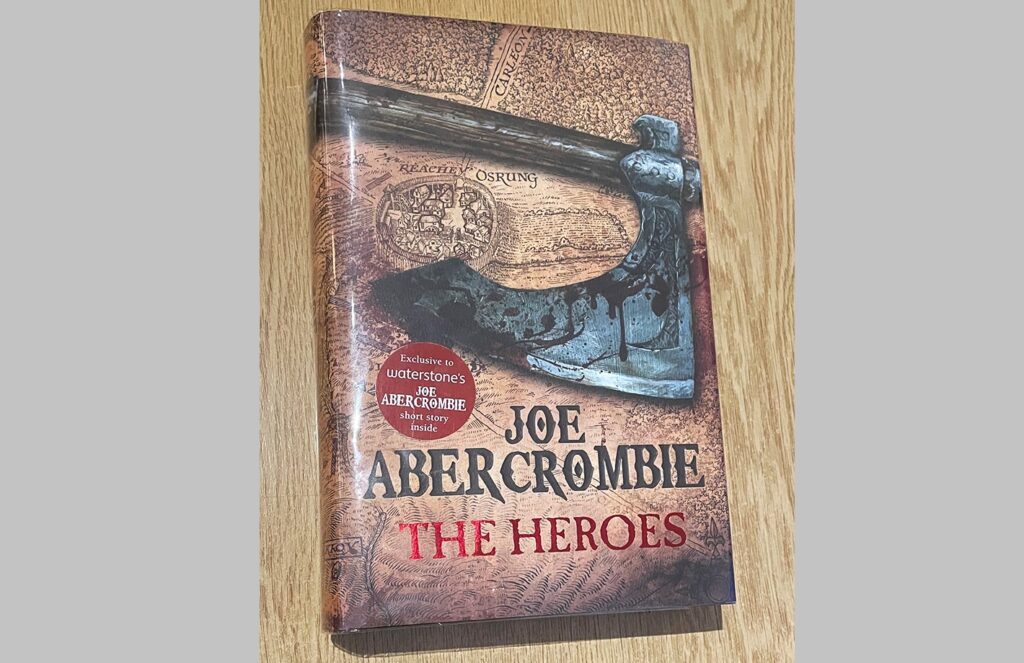
This book zooms in on a three-day battle between the Union and the North, focusing on a strategic hilltop known as “The Heroes.” It features characters from previous books, like Bremer Dan Gorst, now disgraced and serving as a common soldier, and introduces new perspectives.
The book explores the horrors and absurdities of war, as well as the individual ambitions and tragedies of those caught up in the conflict. As both sides suffer heavy losses, the battle becomes a microcosm for the larger issues of power, honor, and sacrifice.
Red Country (Stand-Alone Novel 3)
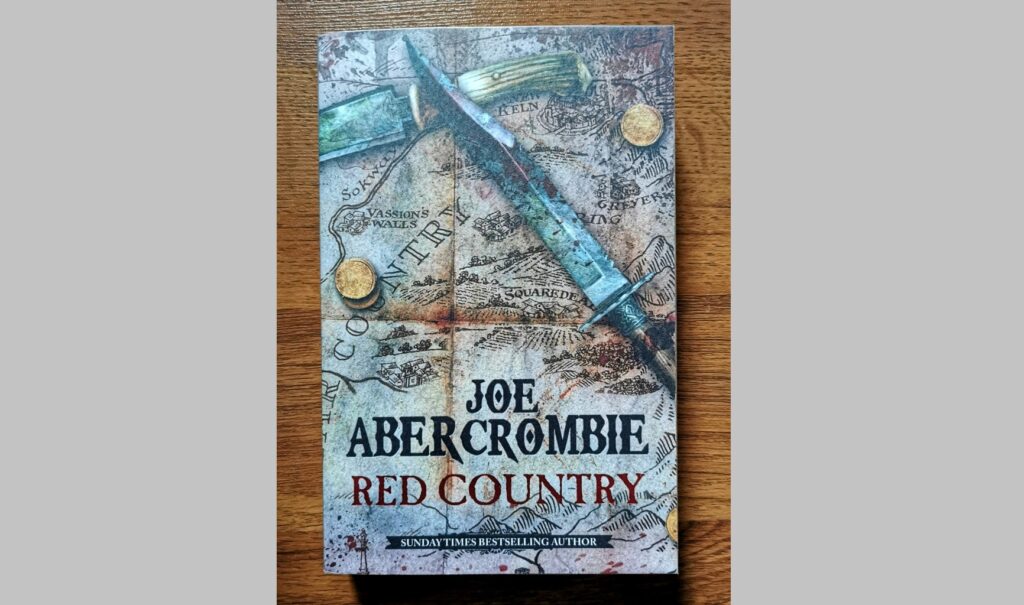
“Red Country” takes us to a frontier land far from the center of the Union. It has a Western feel, complete with outlaws, frontier towns, and unsettled landscapes. Shy South, a young farm girl, embarks on a journey to rescue her kidnapped siblings. She is reluctantly accompanied by Lamb, a seemingly mild-mannered man with a violent past.
As their journey unfolds, they get entangled in a larger conflict involving mercenaries, native tribes, and power-hungry colonizers. The book also marks the return of Logen Ninefingers, providing a new chapter in his storied life.
A Little Hatred (Age of Madness, Book 1)
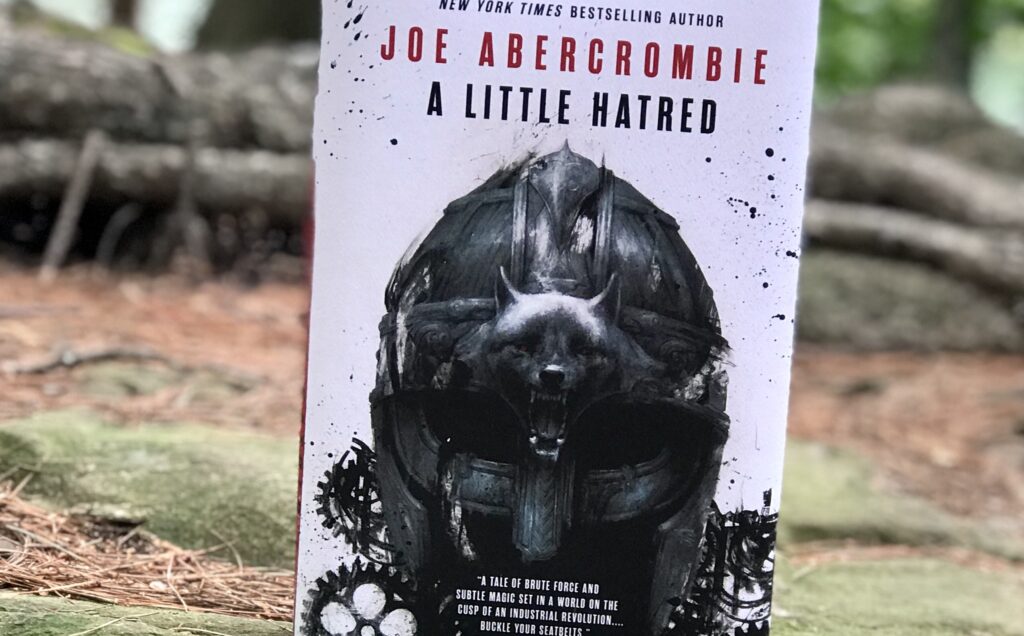
In “A Little Hatred,” the world is changing. Industrialization is taking hold, and social unrest is brewing. The younger generation of familiar families like the dan Gloktas and the dan Luthars are coming into their own but finding the world to be a complicated and unforgiving place.
Rikke, daughter of the Dogman, possesses the mysterious ability known as the “Long Eye,” granting her visions of the future. She, along with other new characters like Leo Dan Brock and Savine Dan Glokta, must navigate political intrigue, industrial revolution, and uprising war.
This installment lays the groundwork for a new, complex conflict that blends old rivalries with new challenges.
The Trouble with Peace (Age of Madness, Book 2)
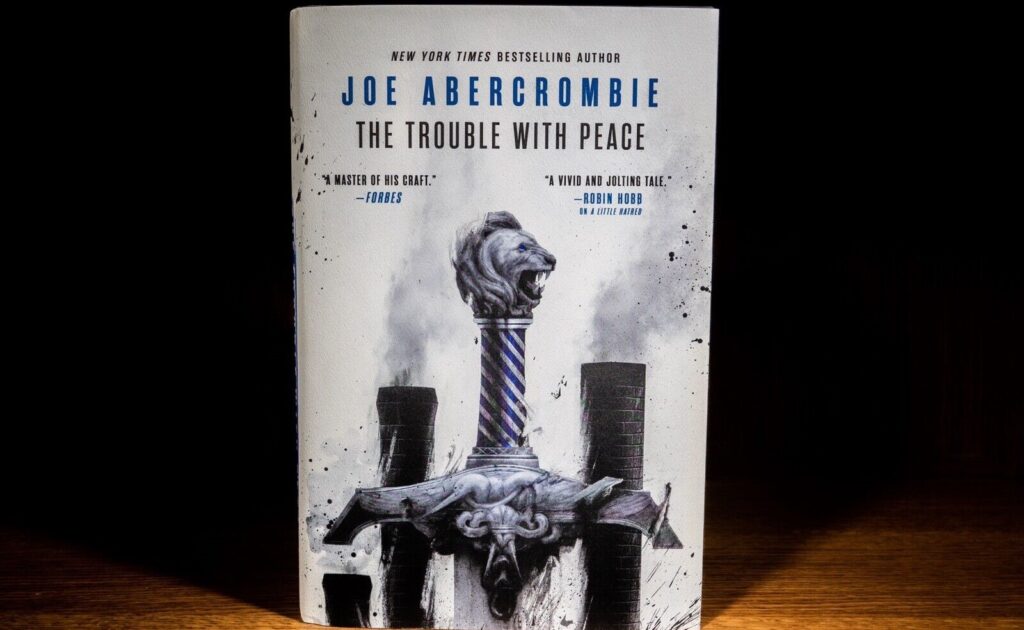
“The Trouble with Peace” continues to build on the shifting landscapes both political and physical introduced in the previous book. The characters find themselves making difficult choices as the seeds of rebellion and discontent sown in “A Little Hatred” begin to sprout.
Loyalties are tested, alliances are made and broken, and the stakes rise dramatically. It’s a deeply political book, examining the cost of peace and the complexities of leadership and governance in a changing world.
The Wisdom of Crowds (Age of Madness, Book 3)
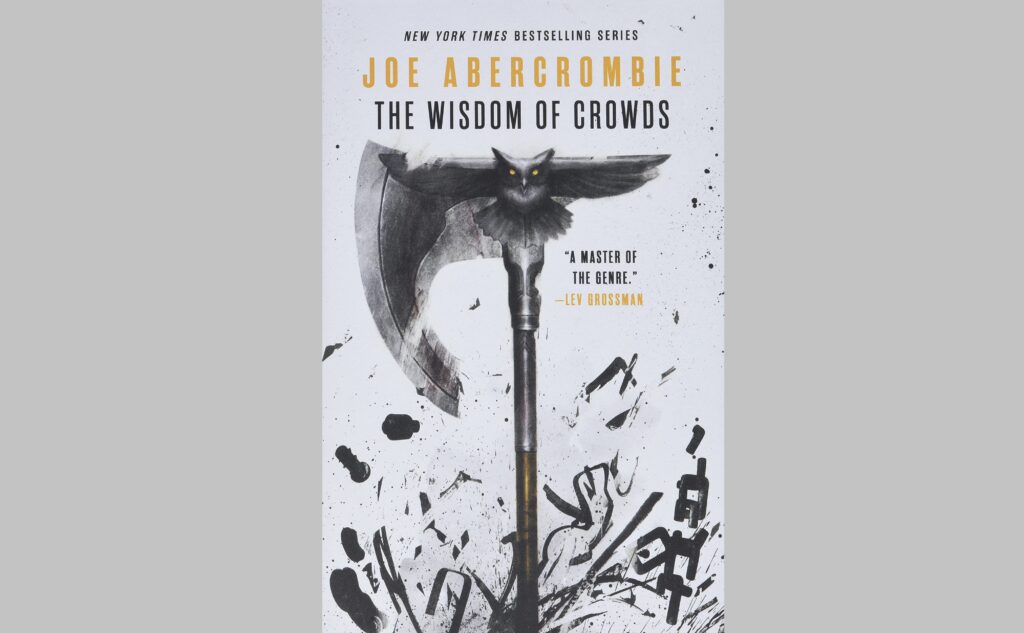
“The Wisdom of Crowds” brings the Age of Madness trilogy to its conclusion. The realms of the Union and beyond are in full upheaval, with various factions vying for control in the midst of a social and industrial revolution.
Characters must confront their pasts, their moral choices, and their ambitions as they try to shape or survive the emerging new world order. Complexities abound, and nobody is guaranteed a happy ending in this grim conclusion that continues Abercrombie’s tradition of defying fantasy tropes.
Why are the stand-alone novels significant even though they are not part of the main trilogies?
The stand-alone novels in the First Law universe, namely “Best Served Cold,” “The Heroes,” and “Red Country,” are significant for several reasons. First, they expand the scope of the world Abercrombie has created, introducing new locales, cultures, and political complexities that aren’t fully explored in the original trilogy.
For instance, “Best Served Cold” delves into the southern realms and gives a closer look at Styria, while “Red Country” takes us to the frontier lands that are barely mentioned in the main trilogies.
Second, these novels often feature characters from the original trilogy, either as main characters or in supporting roles. This allows for an even deeper understanding and development of these characters outside the main storyline.
For instance, Caul Shivers undergoes significant development from “The Blade Itself” to “Red Country,” offering a richer, more nuanced character arc.
Third, each stand-alone novel explores specific themes and concepts in more depth. “Best Served Cold” is primarily about revenge, “The Heroes” discusses the futility and horror of war, and “Red Country” deals with the themes of colonization and the brutality of frontier life. These themes add an extra layer of richness and complexity to the First Law universe.
How does Joe Abercrombie subvert traditional fantasy tropes in his series?
Joe Abercrombie is often credited with subverting traditional fantasy tropes to create a more realistic, gritty, and morally ambiguous world. For instance, instead of portraying characters as purely good or evil, Abercrombie presents complex individuals whose moralities are often fluid and contextual.
There are no traditional heroes; even the protagonists are deeply flawed and capable of actions that may be considered villainous in another context.
Moreover, the notion of the “grand quest” is often turned on its head. In many fantasy series, quests are glorious endeavors that lead to significant victories. In Abercrombie’s world, quests are treacherous, filled with moral compromises, and often yield ambiguous or disappointing outcomes.
Additionally, Abercrombie delves into the psychological toll of war, leadership, and the wielding of power. Instead of glorifying battles and heroism, he shows the grim reality of violence and the complexities of governance, where choices are often between lesser evils rather than clear-cut good and bad options.
What is the significance of the Age of Madness trilogy in the First Law world?
The Age of Madness trilogy is significant as it shows the evolution of the First Law world into an era resembling industrialization. This is a unique move in fantasy literature, where settings often remain static. This new era brings in challenges like technological advancements, social upheaval, and economic inequalities, adding another layer of complexity to the series.
Moreover, the trilogy integrates the next generation of characters, offspring or protégés of characters from earlier books, into the existing world. This allows long-time readers to see how legacies and actions from previous books have far-reaching consequences, creating a dynamic, living world that evolves both socially and historically.
Can you read the stand-alone novels or the Age of Madness trilogy without reading the original First Law Trilogy?
While the stand-alone novels and the Age of Madness trilogy are crafted to be self-contained stories, reading them without the context of the original First Law Trilogy would mean missing out on a lot of the nuances and depth. Characters and events from the original trilogy often play significant roles or are referenced in the later books.
Quick Fact: The stand-alone novels and the Age of Madness trilogy are most rewarding when you’re already familiar with the world and its characters, providing added layers of meaning and emotional impact.
How does Joe Abercrombie handle the concept of morality in his series?
Morality in Abercrombie’s First Law series is a complex, often elusive concept. Characters frequently find themselves in situations where traditional notions of good and evil are blurred. This creates a sense of moral ambiguity that forces both the characters and the readers to question their own ethical beliefs and assumptions.
Unlike many traditional fantasy novels, where characters often act according to a fixed moral code, characters in the First Law series are more opportunistic, acting based on their circumstances, needs, or desires at a given moment.
Are there any elements of humor or irony in the First Law series, or is it all grimdark?
While the First Law series is often classified as grimdark due to its focus on realistic, gritty settings and morally ambiguous characters, there are certainly elements of humor and irony present. Abercrombie has a knack for sharp, witty dialogue and situational humor, often using it to lighten moments of tension or to provide commentary on the actions of his characters.
The humor is often dark and can serve to highlight the absurdities or tragedies unfolding, but it provides a multi-dimensional experience that goes beyond unrelenting grimness.
How do female characters fare in the First Law series?
Female characters in the First Law series are often just as complex and flawed as their male counterparts, and they play significant roles throughout the series.
Whether it’s Ferro in the original trilogy, Monza in “Best Served Cold,” or Rikke and Savine in the Age of Madness, Abercrombie provides nuanced portrayals of women who are strong, intelligent, and capable, but also flawed and human.
These characters have their own agency, motivations, and arcs, and they contribute to the story in meaningful ways. However, it’s worth noting that the series does reflect the patriarchal settings and societal norms of its world, so female characters often face additional obstacles and prejudices.
Is it necessary to read the books in the order they were published, or can they be read in any order?
Reading the books in the order they were published is generally recommended for a couple of reasons. First, the later books, including both the stand-alone novels and the Age of Madness trilogy, contain references and spoilers for the earlier works. Characters from previous books often reappear, and their story arcs may be more meaningful if you’ve read the earlier titles.
Secondly, reading in order of publication allows you to experience the expansion and development of the First Law world in the way Joe Abercrombie intended. Themes, political landscapes, and character arcs unfold more coherently when the books are read in the order they were published.
Does Joe Abercrombie’s writing style evolve throughout the series?
Joe Abercrombie’s writing style does show an evolution as the series progresses. While the core elements of gritty realism and moral ambiguity remain constant, Abercrombie experiments with different narrative techniques in his later books. For instance, “The Heroes” largely takes place over a single, three-day battle, focusing on the microcosm of war.
This is a departure from the broader, sweeping arcs of earlier books and shows a willingness to experiment with form and focus. The Age of Madness trilogy delves into the complexities of industrialization, adding socioeconomic layers to the existing political and moral landscape.
The evolution in Abercrombie’s writing reflects a maturing authorial voice and a more complex storytelling approach.
How does Joe Abercrombie integrate elements of other genres into his fantasy series?
Joe Abercrombie’s First Law universe isn’t confined to the traditional boundaries of fantasy. He brings in elements of other genres to create a more varied and interesting narrative landscape. “Red Country,” for instance, borrows heavily from Westerns, complete with frontier towns, outlaws, and themes of colonization.
“Best Served Cold” has elements of a revenge thriller, focused around a series of calculated assassinations. The Age of Madness trilogy introduces elements of industrial drama and even a touch of Dickensian social commentary. These cross-genre elements enrich the series, providing a multi-faceted experience that goes beyond conventional fantasy storytelling.
What does the series reveal about power dynamics, both political and personal?
Throughout the series, Abercrombie takes a deep dive into the nature of power, from the political machinations of rulers and generals to the personal dynamics between friends, family, and enemies. The series doesn’t romanticize power; rather, it exposes the cost, compromises, and moral complexities involved in acquiring and maintaining it.
Power is often shown to corrupt or at least force choices that blur the lines of conventional morality. Moreover, power is depicted as transient, easily lost, and not an end in itself. Even characters who achieve their aims often find that the satisfaction or security they seek remains elusive.
What role does the supernatural play in the First Law series?
While the First Law series primarily focuses on human events and emotions, a thread of the supernatural runs through the books. The presence of wizards like Bayaz and entities like the spirits in the Great Northern Library adds a layer of complexity and unpredictability.
However, unlike many fantasy series, the supernatural elements are often shrouded in ambiguity and moral complexity. They are not deus ex machina solutions to problems but rather add to the series’ complexities and challenges. The supernatural elements are interwoven subtly, leaving room for interpretation and discussion.
Is the series suitable for younger readers, and why or why not?
The First Law series contains mature themes, including graphic violence, moral ambiguity, and adult situations, making it more appropriate for older teens and adults. The series doesn’t shy away from the brutal realities of war, power struggles, and human behavior, often depicted in a raw and unfiltered manner.
The complex themes and mature content provide a deep, thought-provoking reading experience but might be too intense or challenging for younger readers.
Conclusion
Joe Abercrombie’s First Law series offers a rich, multi-layered experience that defies the conventions of traditional fantasy literature. Whether you’re new to the series or a long-time fan, the complexities of its world, characters, and themes provide much to explore and discuss.
From its nuanced approach to morality to its exploration of power dynamics and its blend of genres, the First Law universe is a compelling saga that rewards both casual reading and deeper analysis. Whether read in order or sampled based on personal preference, each book contributes to a larger, enthralling narrative that continues to captivate audiences.
